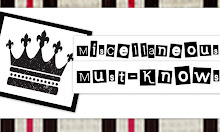We all know that having clean hands is one way to prevent seasonalcold and flu viruses, including H1N1 Swine Flu.
But should you wash with soap and water OR coat your hands with disinfecting gel?
If your hands aren't actually grimy, the best way to clean them is to use hand sanitizer, James Scott, a microbiologist at the University of Toronto's Dalla Lana School of Public Health. "It reduces the bacterial burden to a greater extent than soap and water," he said. "And your hands stay cleaner longer than if you were to use soap and water."
The waterless gels and foams have also been found to be effective in preventing the spread of viral and bacterial based diseases, like seasonal colds and flus. One study found that college students with hand sanitizer dispensers in their dorms had fewer complaints of coughs, chest congestion and fever. Plus their risk of getting sick was 20 percent lower than students whose dorms did not have the dispensers.
But the hand sanitzers must contain 60 percent or more alcohol, according to the FDA. Skim past the "kills 99.9% of bacteria" claim on the package and instead be certain that the active ingredient listed is either ethanol or isopropanol, at a percentage over 60.
They also must be used correctly. Make sure hands are free of visible grime and dirt and then apply a palm full of product and rub vigorously for 20 to 30 seconds, making sure to distribute the sanitizer between your fingers, under your nails and jewelry, on your wrists and on the backs of each hand.
Never rinse your hands with water or wipe them with a towel after using a hand sanitizer... this will counteract the effect of the product.
Another gold star for hand sanitizers: They tend to be gentler on skin than soap and water. Despite their high alcohol content, which is often thought to make creams and gels drying, one study found alcohol based hand sanitizers left skin in better condition than antibacterial soap. "Most of the modern hand sanitizers have emollients in them that will actually improve skin condition," Scott said.
But, don't toss your soap dispenser just yet. While the high alcohol content of hand sanitizers can kill bacteria, it doesn't necessarily clean your hands. That is, it does not cut thorough grime like dirt, blood, feces or other bodily fluids. Therefore, soap and water must be the first choice in restrooms. It is also essential in the kitchen as alcohol doesn't kill the foodborne bacteria E. Coli as well as soap and water does.
The best way to wash your hands with soap and water is to rub hands vigorously for at least 20 seconds, scrubbing front and backs of hands, wrists, and between fingers and under fingernails, according to the Mayo Clinic. Rinse well, dry hands with a clean or disposable towel or air dryer and, if possible, use your towel to turn off the faucet.













